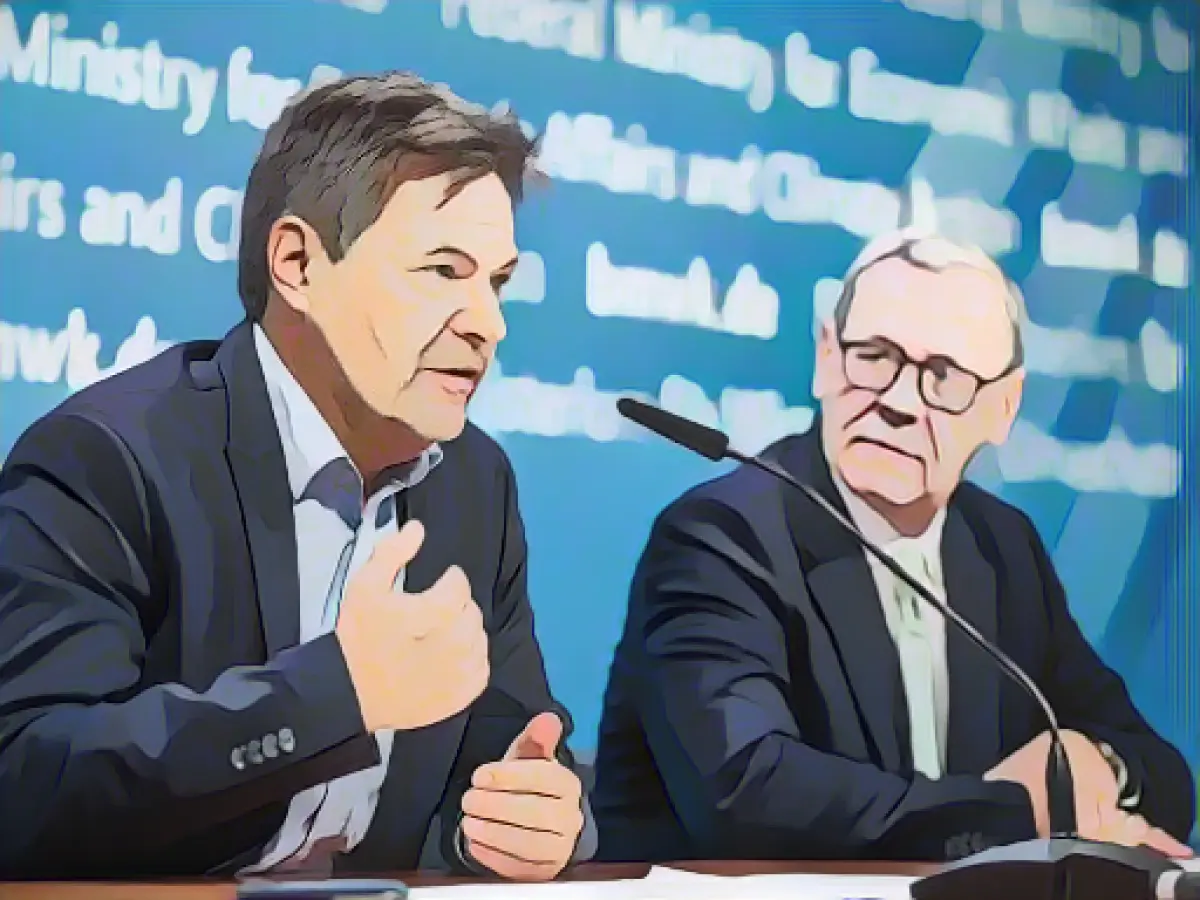Unlocking Green Potential: Germany's Hydrogen Network Plans
Hydrogen is shaping up to be a promising climate-friendly energy source, but there's one hitch: the infrastructure for transporting it is still in its infancy. This is all about to change, as German Economics Minister Robert Habeck (Greens) and representatives from gas transport companies recently unveiled their plans to build a hydrogen network in Germany.
"We're putting our money where our mouth is to tackle the chicken-and-egg problem," echoed Thomas Gößmann, CEO of FNB Gas, the union of supra-regional gas transport companies. So, what's the big plan, and who's footing the bill?
The Heart of the Plan: The Hydrogen Core Network
The core network includes vital hydrogen pipelines and transportation infrastructure, spanning an astounding 9,700 km. This ambitious network resembles Germany's highway network. The estimated capacity to receive hydrogen is 270 terawatt hours. For comparison, the projected hydrogen demand for 2030 is around 95 to 130 terawatt hours, indicating that Germany is preparing for the future.
The Players and Their Stakes
Private companies will shoulder the €19.8 billion investment cost for the core network. To help spread the financial burden over time, the German government has proposed an "amortization account." Under this plan, initial grid fees for hydrogen consumers will be capped, avoiding a potential speedbreaker in the rush towards a hydrogen-powered future.
Given the limited number of early adopters, the remaining cost gap will be covered by the federal government using the amortization account. The idea is that once more users connect to the grid and pay their fees, the federal government will recoup the funds, and in the unlikely event that this doesn't happen by 2055, the operators will pick up the tab, up to 24% of the remaining balance.
The Smaller Lines and Their Importance
Detailed planning for the state, county, and district hydrogen grid lines is still in progress. According to Habeck, this planning phase will begin after the Federal Cabinet's imminent decision. The BDEW, the German Association of Energy and Water Industries, has emphasized the need to establish favorable conditions for connecting lines to customers as soon as possible, as 1.8 million potential hydrogen users in the industrial sector are connected to the gas distribution network.
A New Era of Hydrogen
Hydrogen is slated to play a transformative role in the energy transition, helping to cut greenhouse gas emissions in various sectors. The exact source of need-meeting hydrogen will be a blend of domestic production and imports via pipelines or ammonia ships.
Habeck revealed that Germany aims to produce 30-50% of its hydrogen requirements domestically in the long term, while importing the rest. The country even sees potential for hydrogen imports from African nations like Nigeria, boasting better solar power conditions due to increased sunlight hours.
The Federal Ministry of Economics is currently drafting the Hydrogen Acceleration Law, designed to expedite the development of the hydrogen economy. According to Habeck, the law should be passed by the cabinet this year.
The Road Ahead
The development of energy-efficient hydrogen production methods and investments in hydrogen storage and conversion to electricity technology are essential to realize a hydrogen economy. More than just a network build-out, it's about creating the infrastructure to enable a truly sustainable energy future for Germany.
Sources:
Advanced Insights
The proposed German hydrogen core network seeks to supply 50-70% of the country's expected hydrogen demand by 2030, amounting to around 45-90 TWh of hydrogen per year. This demand is expected to grow to 360-500 TWh for hydrogen and its derivatives by 2045. The German government has committed significant funding to support the development of the hydrogen economy, including €4.6 billion for hydrogen-ready gas-fired power plants, €3.5 billion for H2Global hydrogen procurement, and €1 billion for industrial corporations adopting hydrogen use.
The German hydrogen core network will be nearly 10,000 km long by 2032, with a combined transport capacity of 87 GW. It will be closely linked to European networks and involve cross-border connections with the Netherlands and Belgium. The construction of the network will largely be in the hands of private sector companies, with governments assisting in initial financing and helping establish tariffs that cover costs.








